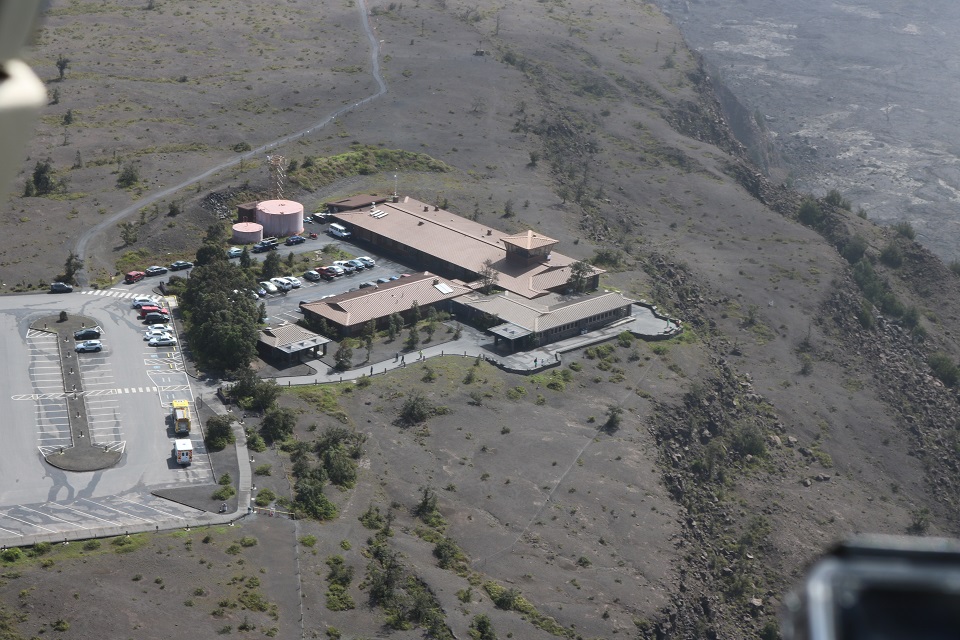News Release
You are viewing ARCHIVED content published online before January 20, 2025.
Please note that this content is NOT UPDATED, and links may not work. For current information,
visit https://www.nps.gov/aboutus/news/index.htm.

NPS Photo/J.Christensen
|
Subscribe
|
Contact: Jessica Ferracane
Hawaii National Park, HAWAI‘I – Hawai‘i Volcanoes National Park (HAVO) and the U.S. Geological Survey (USGS) seek community input to consider and refine four initial design concepts for the proposed HAVO Disaster Recovery Project via a virtual civic engagement process.The intent of the project is to repair and/or replace critical park infrastructure and USGS-operated facilities and equipment damaged during the 2018 eruption and summit collapse of Kīlauea volcano. The project also includes plans for the potential future use of the Uēkahuna Bluff area, a site considered sacred to many Native Hawaiians and other groups.
Beginning in May 2018, the park and Kīlauea summit underwent a major change as magma drained from the chamber beneath Halema‘uma‘u Crater, and the caldera began to collapse, triggering 60,000 strong earthquakes and clouds of rock and ash that continued until early August. The seismic activity was primarily centered near the crater, and significantly impacted buildings in the immediate vicinity on Uēkahuna Bluff, including Jaggar Museum and the USGS-operated Reginald T. Okamura facility and equipment, resulting in the closure of the area. The 2018 eruption and caldera collapse were the most destructive eruptive events in Hawai‘i in the last two centuries.
The results of an initial post-disaster assessment conducted in October 2018 found that significant investment would be necessary to make Jaggar Museum and the USGS Hawaiian Volcano Observatory-operated Reginald T. Okamura building safe to occupy and operational. Most importantly, the buildings are surrounded by fault lines and the area continues to subside on the crater side, undermining slope stability at the existing terraces and building foundations.
In addition, the project presents solutions to overcrowding at Kīlauea Visitor Center (KVC), ranging from renovation to rebuilding the facility elsewhere in the park. The existing KVC building is inadequate for current visitation due to its small size, and the closure of Jaggar Museum has exacerbated the overcrowding of KVC by concentrating all visitor contact in one location.
“Hawai‘i Volcanoes National Park belongs to everyone, and to our future generations,” said Hawai‘i Volcanoes National Park Acting Superintendent Rhonda Loh. “We need to hear from our community and stakeholders about what they envision for their mo‘opuna, their grandchildren, and the generations that will follow.”
“The USGS Hawaiian Volcano Observatory is looking forward to a new field station inside Hawai‘i Volcanoes National Park. A facility in the summit region is vital for our volcano monitoring and research programs that support park management and public safety in Hawai‘i,” said USGS Hawaiian Volcano Observatory Scientist-in-Charge, Tina Neal.
To slow the spread of COVID-19, the park will conduct the civic engagement online in lieu of public meetings. Paper copies of the design concepts can be mailed to interested parties upon request.
To view and comment on the four design concepts and summaries, visit https://parkplanning.nps.gov/projectHome.cfm?projectId=92891. If you have questions or prefer to be mailed the design concepts, call (808) 460-6212, or email e-mail us.
Comments on the HAVO Disaster Recovery Project will be accepted starting May 15, 2020, and the comment period will end June 15, 2020. Following this period, the National Park Service (NPS) will use community feedback received to determine which concept (or modified concept) will be the proposed concept (alternative). At that time, the NPS will evaluate the impacts of the proposed alternative. During this process, if it is safe to do so, the park hopes to hold in-person meetings with the community.
The NPS and USGS encourage civic engagement throughout the process. Public input early in the process is important. The park is currently in the preliminary planning phase of this project, and invites all interested members of the community to voice your ideas, comments, or concerns regarding this effort.
More than 20,000 National Park Service employees care for America's 419 national parks and work with communities across the nation to help preserve local history and create close-to-home recreational opportunities. Learn more at www.nps.gov, and on Facebook, Instagram, Twitter, and YouTube.
Last updated: July 17, 2020
